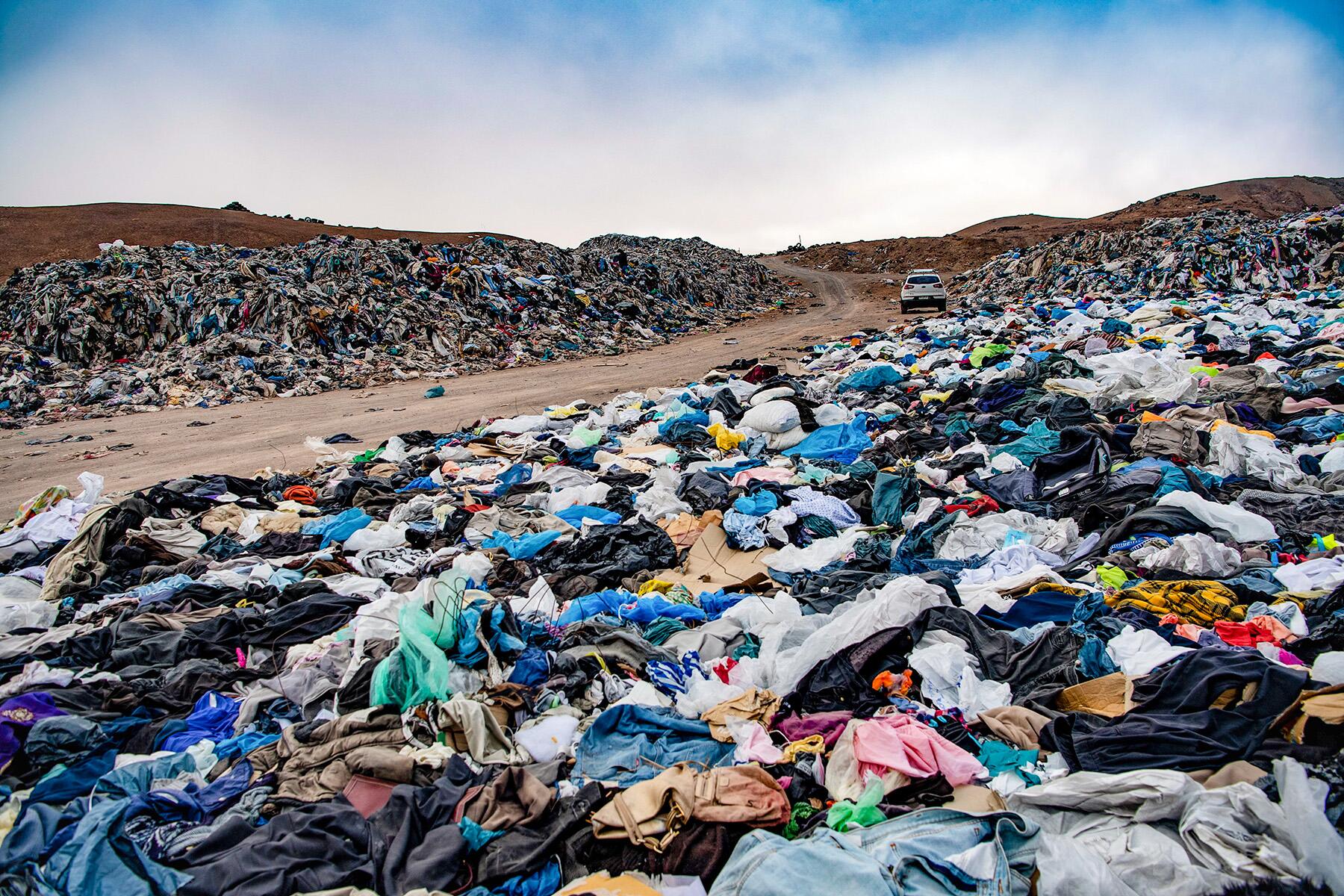Not sure where you placed that $20 H&M shirt? Chances are it’s discarded in this Chilean desert.
The Atacama Desert is a prized bucket list destination, home to breathtaking views, azure salt lakes, alien-like dunes, and enviable star-gazing.
As night falls, the Atacama is favored by arid air, making the Milky Way visible to the naked eye. However, the Chilean reservoir has sadly become a dump in recent years. And no, that’s no euphuism. It has unwittingly become the unexpected dumping ground of fast fashion.
Remember that impulse $20 H&M purchase you bought? If it’s not still sitting in the back of your closet, chances are it has found its final resting place in Chile, joining countless other forgotten fashion pieces. The enchanting Atacama, famous for its otherworldly beauty, has distressingly become an eerie monument to fast fashion’s unregulated wastefulness.
How Did This Happen?
Stepping onto my flight from Santiago to Calama, the thrill of adventure surged through me. After take-off, a swift left turn and suddenly, we were soaring over the spine of the Andes Mountains. The scenes kept morphing: mountain ranges, serene lakes, a fleeting glimpse of the sea, and the overwhelming vastness of the desert captivated me until the aircraft’s wheels touched down on the runway.
Recommended Fodor’s Video
During the two-hour journey from the airport to San Pedro de Atacama, the stark allure of the terrain held me spellbound by its beauty. The desert unrolled endlessly, clad in shades of copper and earth and whims of silver. All while snow-capped mountains lurked in the backdrop. Mirage-like heatwaves blurred the desert plains, and now and then, a llama would punctuate the emptiness. However, I soon discovered that something else abounded despite its lack of human presence: waste. I couldn’t help but wonder, what brought all this waste here?
Chile is no stranger to waste; it’s been closely knitted (pun certainly intended) with our consumption habits for many years. Nobody thus far has been able to pinpoint when, where, and most importantly, who allowed this phenomenon to occur.
Clothes made in China and Bangladesh by yet another ethically debatable side of fast fashion seasonally transit through the West. Then the price is slashed with an on-sale sticker, and before Christmas, what remains is packed up and sent to the Iquique Port in northern Chile. There, merchants traveling some 1,800 miles north from Chile’s capital buy some for resell (upcycling would be a generous term), while the remaining 39,000 tons are put to pasture in the desert.
“This clothing arrives from all over the world,” explained Alex Carreno to AFP; he is a former employee in the port’s import agency. “What is not sold to Santiago nor sent to other countries stays in the free zone as no one pays the necessary tariffs to take it away.”
A U.N. report found that global clothing production doubled between 2000 and 2014, making the industry responsible for over 20% of the world’s water wastage.
Although fast fashion is the most common perpetrator, other high-end brands are equally guilty. Entire seasons from Calvin Klein, Hugo Boss, and Chanel lay among the discarded clothing. The fast-fashion industry, driven by fleeting trends and cheap production, has turned this otherworldly landscape into its industry’s dumping ground.
The Atacama Desert’s harsh conditions amplify the urgency of sustainable fashion choices. Water scarcity is a constant struggle, and life here has evolved to adapt to these extreme circumstances. It is a delicate ecosystem that demands respect and conservation. Yet, the fashion industry’s insatiable demand for new styles and low prices disregards this fragile balance. Recently, the scorching heat of the desert mixed with the chemically washed clothes have created intoxicating fumes and forced local authorities to issue stay-at-home orders. At the same time, specialized teams work to conceal them.
Digging ever-so-slightly deeper, I discover that the Atacama Desert is just one of the many dumping grounds of fast fashion. This phenomenon is so widespread that “waste colonialism” was coined to describe it. Out of the millions of tons of clothing produced yearly, an almost equal amount is cast off to the markets of developing nations and informal landfills–for instance, deserts.
A Call for Conscious Consumption
The Atacama Desert’s contrasting tale of beauty and scars calls for a paradigm shift in our fashion habits. We must embrace conscious consumption and reject the destructive cycle of fast fashion. But how?
Textile waste produces more CO2 emissions than commercial aviation and maritime industries combined, and the Netherlands is making fast-fashion giants take accountability. As of July 2023, the country is introducing EPR (Extended Producer Responsibility) scheme for textiles in the Dutch market. This policy will shift the responsibility of sorting, recycling, and collection from local municipalities to the manufacturers. The Dutch government hopes that manufacturers bearing this cost will incentivize them to produce better quality and longer-lasting materials. This strategy comes with faults but is a step in the right direction.
The Atacama Desert is a microcosm of the fashion industry’s dirty secret. It confronts the consequences of our disposable fashion habits while urging us to embrace conscious consumption and sustainable choices. The desert beckons us to act now, reminding us that our fashion choices can shape a better world.




